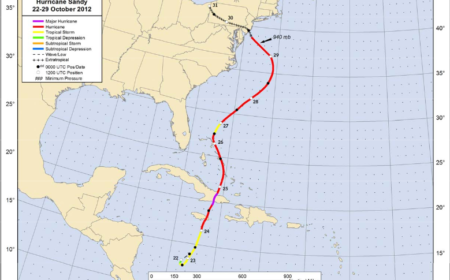May 25, 2019 – Are we running out of usable radio spectrum wavelengths as we begin to implement what is known as 5G networks? According to the folks at NASA and NOAA (the National Oceanic and Atmospheric Administration) in the United States, it would seem so.
What we are talking about is radio frequency wavelengths which today are used for a wide range of communication purposes. The radio frequency or RF spectrum runs from 30 Hertz (a Hertz is a standard unit of frequency defined by 1 electromagnetic wave cycle per second) to 300 GigaHertz. At the low end of the spectrum, these RF frequencies are used for navigation, AM band radio, and wireless communication with pacemaker implants, just to name a few examples. High-frequency bands are used for shortwave radio, CB radio, radar, FM radio, television, aircraft communication, weather radio, and mobile land and marine communication. The highest frequencies are used by radio astronomy, your microwave ovens, WiFi networks, GPS, and satellite radio.
With all these applications could we conceivably run out of free RF spectrum bands to add something like the deployment of a global 5G network without it interfering with other critical uses of radio wave-based communication?
This is top of mind for those at NOAA who track hurricanes by satellite. The rollout of the licenses for 5G operating in the 24.25 to 25.25 GigaHertz bands of the electromagnetic spectrum, is seen by meteorologists to be far too close to the radio frequencies in use by NASA satellites. According to Dr. Neil Jacobs of NOAA, in testimony given to the U.S. House Science, Space, and Technology Committee, the auctioning of RF bands to telecommunication providers in the aforementioned range would mean a potential loss of 77% of the data transmitted by satellites to ground stations causing a degradation in forecasting of 30%. In other words, without clear transmission of storm track data from satellites, forecasters would be seriously hampered from being able to predict where hurricanes were headed. That would likely hamper NOAA’s current level of service pushing them back in terms of accuracy of forecasts to the early 1980s, or in the case of hurricanes a reduction in lead time of between 2 and 3 days. In the case of Hurricane Sandy in 2012, a recent study shows that with degradation in data as predicted by NOAA from the interference in satellite transmissions, weather modeling would have completely missed the New Jersey landfall.
So how can 5G and weather RF spectrum wavelengths co-exist? 5G isn’t restricted to the 24 to 25 GigaHertz RF bands. The network technology behind it is flexible enough to operate within existing 4G RF band frequencies (600 MegaHertz and 6 GigaHertz), as well as at the millimeter-wave RF band wavelengths of between 24 and 86 GigaHertz. So it would make sense that future auctions of RF bands to telecommunication providers stay clear of the lower end of the millimeter-wave radio spectrum. Of course, that makes perfect sense to a layman like me. Who knows, however, what lobbyists will influence decision makers in governments when issuing licenses? After all, there is lots of money to be made from the sale of RF band transmission wavelengths?
















